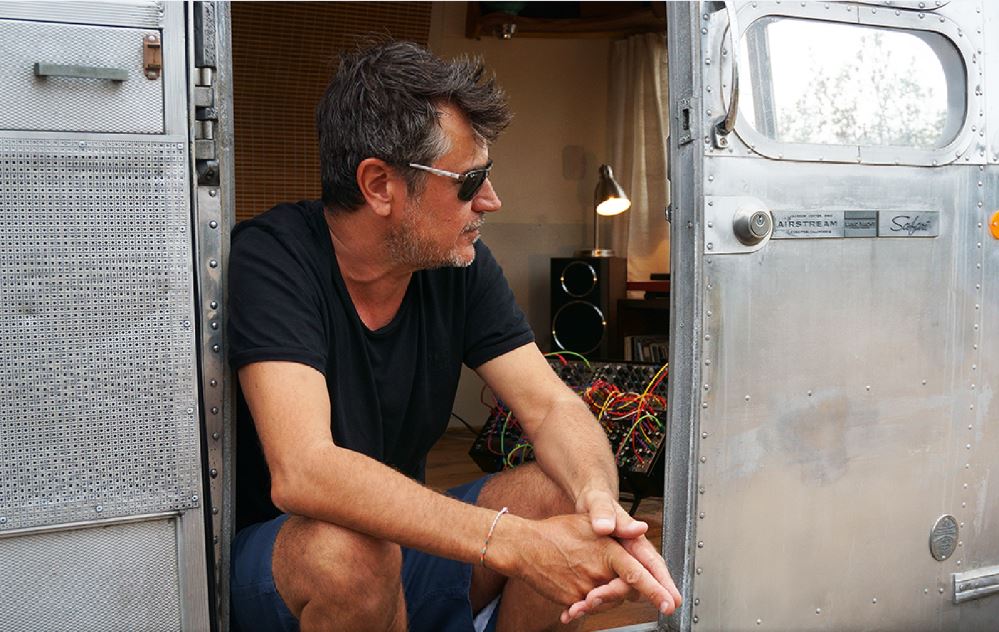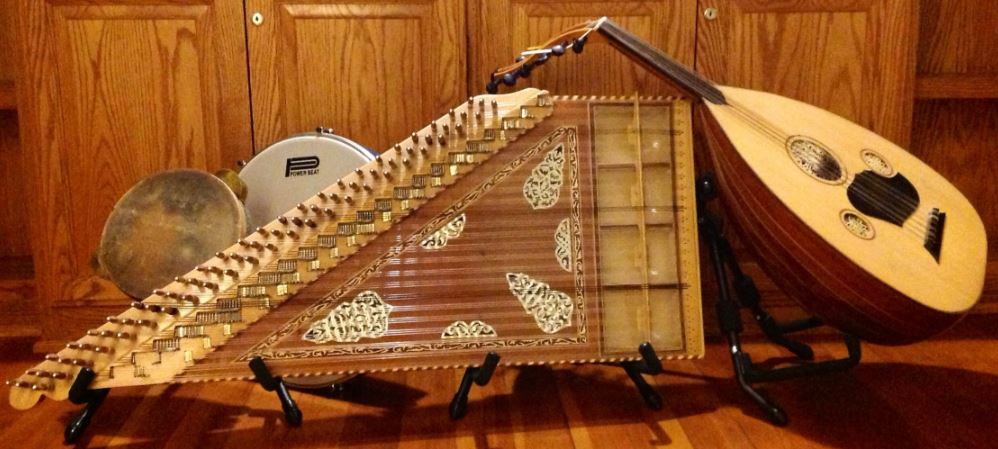Listening to the rhythm of our brand…
Sonic branding is not, by any means, new. You even have your own: the soundtrack of your life, music from your teenage or college years that evokes an emotional response – whether pleasurable or painful – even decades later.
Combining aural and visual sensations is a powerful way to reinforce learning and create memories that are easily recalled, deep from inside your subconscious – transcending shapes, colors and other visual cues. And that’s why big brands use it, and the best, use it very well. In in our latest Perspectives article, we look at the composition process of Abdul Latif Jameel’s first unique brand sound-bed, and how it speaks to both our heritage and our future.
With five senses, why rely just on sight? There are so many other ways to engage – many people often prefer to listen to one thing and do something else.
Advertising jingles, on radio, or TV; or the last tune on your radio that you listened to on the way to work, somewhat annoyingly, can get stuck in your head for hours, days or even weeks. Don’t believe me? OK, what if I said ‘Intel Inside‘ – “da-Da-da-DA”, just four chords, or even ‘Ba da-da-dah daah… I’m loving it!’ You cannot un-think of these now, right?
The marketing benefit of sonic branding is rather self-evident: exploiting our psychological and even physiological relationship with sound, and in particular, music, to make a brand, or a branded experience both more memorable and recall-able.
We are bombarded with thousands of visual and word/text-based branding messages everyday, to stand out in this avalanche need to tap into something deeper. To make that sought after emotional connection.
A recent Harvard Business Review article suggested that: “the strategic use of sound can play an important role in positively differentiating a product or service, enhancing recall, creating preference, building trust, and even increasing sales.” Like a hit song, sonic branding can influence consumers in ways that marketeers want.
Big consumer brands spending big money is all too familiar, but it is a little more unusual when less well known, for example B2B brands, articulate their brand values in music. Particularly, a global brand that has grown out of the Middle East.

Abdul Latif Jameel celebrates it’s 75th anniversary in 2020. Born in an era of world change, of post-war optimism and opportunity, this celebration, at the start of a new decade three quarters of a century later, once again comes in a world of swirling transformation. Today, a global investor and diversified operations business with a presence in around 30 countries and over 40 nationalities the organization needed to come up with a branded music sound bed – and audio signature – that not only matched the brand’s aspirations, but respected its three-quarters-of-a-century heritage and one that would be acceptable, internationally, across cultures whilst looking beyond today’s horizon to a brighter future.
It’s about telling our brand’s story: and this comes from considering the emotion it evokes in the heart of the listener – tempo: slow or fast; instruments: contemporary or classical. With auditory neural pathways being somewhat less complicated than visual, people tend to react orders of magnitude faster, this effect has been shown to even shape or change your behavior prompted by the release of hormones – considering the science, is worth the time.
We think we’ve done it! This is the ‘original theme’ master track:
This range of musical tempo and feeling provides Abdul Latif Jameel with a unique soundtrack that is undeniably modern, contemporary and uplifting and in a style that is globally accessible, but also has some inherent heritage roots through the use of Arabic instruments in a very modern way. The various arrangements and changes of tone and tempo lend themselves to scoring a range of visual images – both in video, and also, e.g. for events, etc, offering optimum flexibility.
The sound had to be, well . . . “BIG!” By that, we mean cinematic in a super-widescreen way – a sound that evokes big open spaces, the world as opportunity, in short, an organization striving for global positive impact. Much the same as the Theme from 1960s movie The Magnificent Seven (Elmer Bernstein) conjures images of the huge open space of the Mexican desert under wide open skies – even before you understand visually where you are, you know it’s BIG!
We spoke to the composer, Jonny Bull (pictured below), about his approach to composition for corporate brand music in general and for the special case of Abdul Latif Jameel in particular, to get some more insight into this uniquely creative process:

“I approach writing brand music much the same as writing for a character in a movie. Finding the feeling and tone of the music, a theme that captures the attributes and expresses the personality of the brand. Of course every brand is unique, so the music should be something unique to them.”
“Abdul Latif Jameel wanted to have an audio signature that would develop and evolve into longer pieces – a simple phrase embedded in longer pieces of music, reinforcing the brand identity at a deeper level.
I try to reach for music that when it syncs to picture you get that feeling of the whole being greater than the sum of its parts. When you put great music with great visuals something magical can happen! Sometimes it helps to watch a brand video while I’m playing around with ideas, until something clicks and feels right. The most important first step is to find a simple theme that will become the audio signature for the brand, one that has enough scope to form the basis of different variations
It was an honor to be asked to compose the music for Abdul Latif Jameel, particularly as they have a history stretching back 75 years! Being a global brand with roots in the Middle East opened doors to an exciting palette of sounds, to see how they could work in a contemporary piece.
From the start it was clear the music should be uplifting and have a cinematic wide-screen sound, with a range of dynamics from whisper quiet to epic and cinematic.
Orchestral strings and woodwinds would be the main instruments, also we wanted to include subtle flavours of middle eastern instruments like the Oud, Nye Flute and Saz. Driving percussion was provided by doumbeks, dohls, darbukas and taikos, the beats combined in a contemporary way using modern production techniques.

The Abdul Latif Jameel audio signature (which features the Oud) worked well for all the different versions. The original piece had two distinct parts a softer section, and a more syncopated driving section. These provided plenty of material to create new variations that always felt like they belonged to the same family.”
So from this main, original arrangement, we worked with Jonny to create a series of mood tracks, some calmer, some more percussive and urgent. You can hear these in a curated playlist on the Abdul Latif Jameel YouTube channel here.
The Abdul Latif Jameel music is now being deployed across as many branded touch-points as possible. In fact, it has been so well received, that the project has since been extended to another brand – Community Jameel.
Since formalization in 2003, what is today known worldwide as Community Jameel has represented the Jameel family tradition of philanthropy established in the mid-1940s, and is now working globally across six areas – livelihoods, arts, education, health, climate and evidence to innovate for a better future. This includes, for example, strong links with MIT, Imperial College, London the V&A Museum, amongst others.
Their brand music needed to reflect what the philanthropy stands for today, namely:
- Innovation: Fresh thinking. New ways of working. The latest discoveries. Innovation will move us all towards a brighter tomorrow.
- Entrepreneurship: From nurturing ecosystems that foster startups and social enterprises, to building platforms for the creative industries.
- Creativity: Those precious sparks of inspiration that lead to the exciting and unexpected. The role of the arts in building open, connected communities.
- Youth: Youth means energy, vibrancy and openness to new ideas. Youth is the future.
Again, the more modern technical feel of the soundtrack, looks to reflect this innovative approach to tackling the World’s biggest challenges. Have a listen below:
As we said at the beginning, sonic branding is nothing new – it has just been underrated for some time, yet it’s all around us, from the Skype ringtone, to the Apple or Windows start-up chimes, to Darth Vader’s theme in Star Wars. Sonic branding has power and potential, and yet so many smaller businesses and those organizations without a B2C proposition core, haven’t really given it the attention it deserves . . . yet.
We’re sure this branding tool will continue to become a mainstream way to connect brands and consumers and we’ll see some true innovation as this progresses.





 1x
1x

 Added to press kit
Added to press kit


